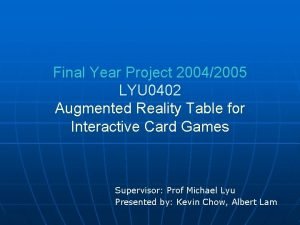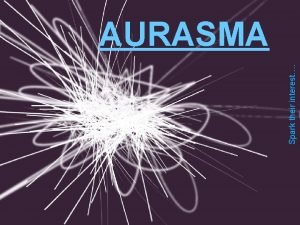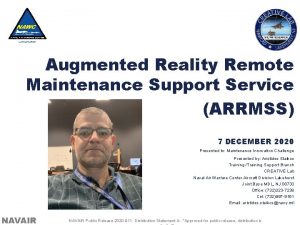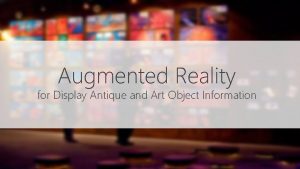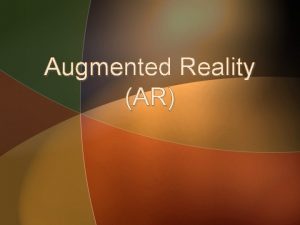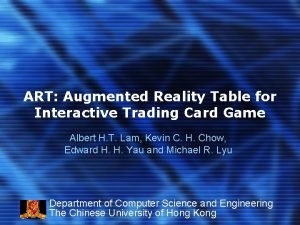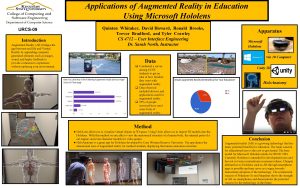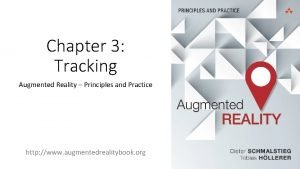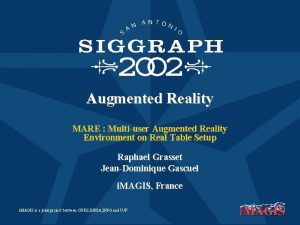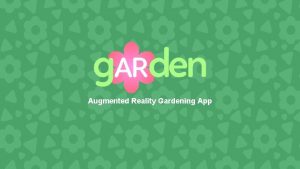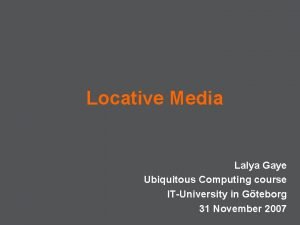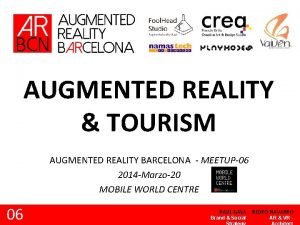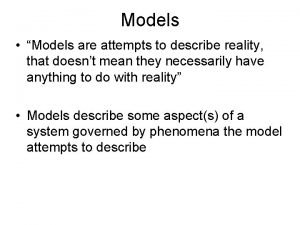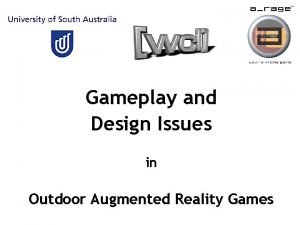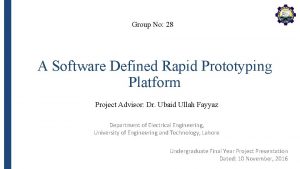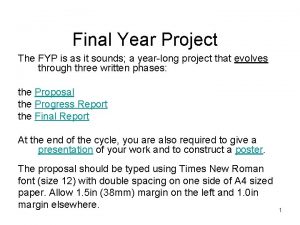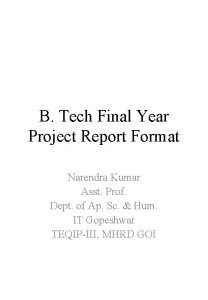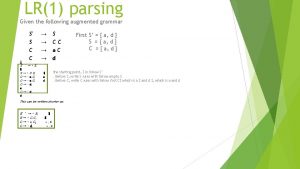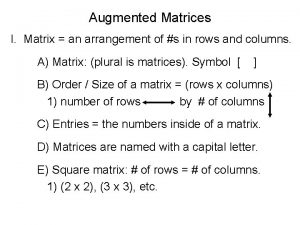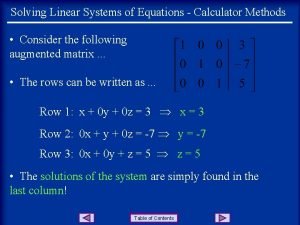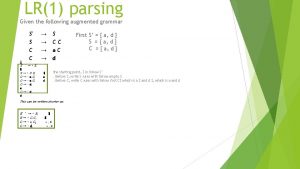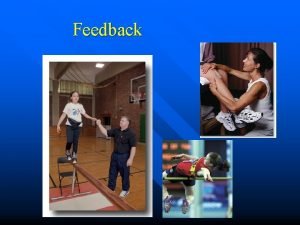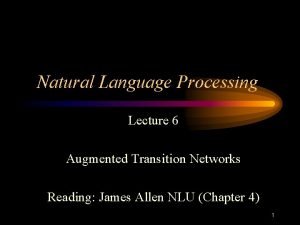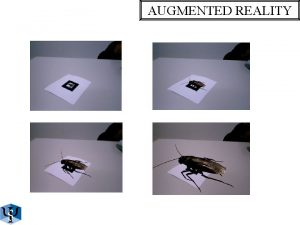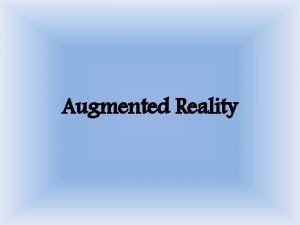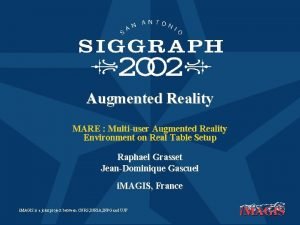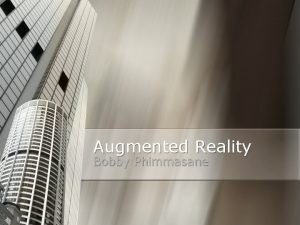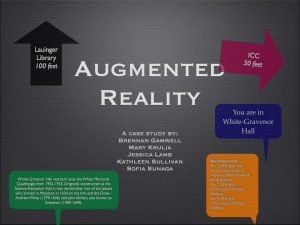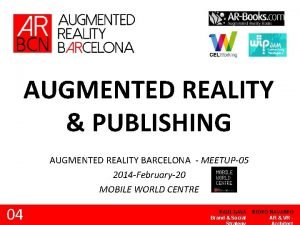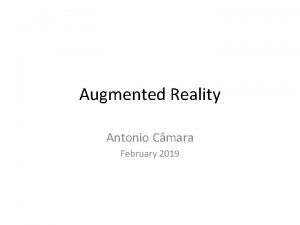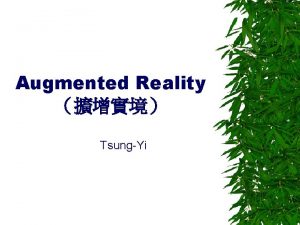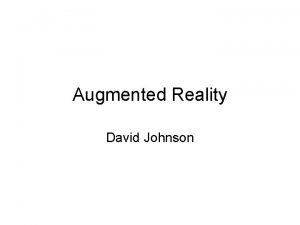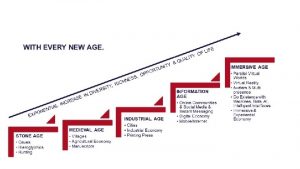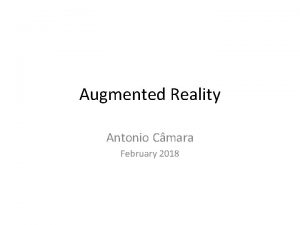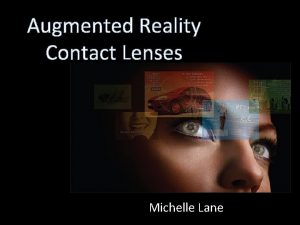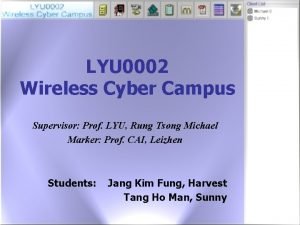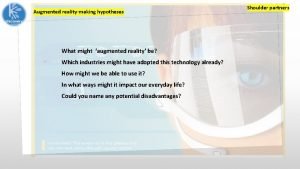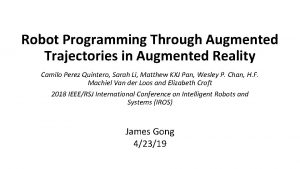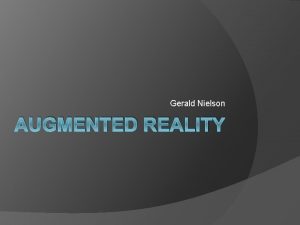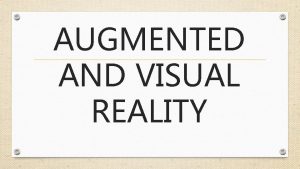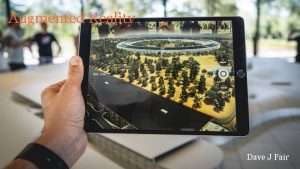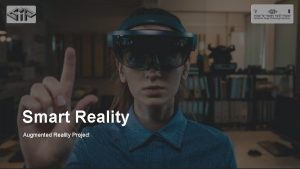Final Year Project 20042005 LYU 0402 Augmented Reality














































- Slides: 46

Final Year Project 2004/2005 LYU 0402 Augmented Reality Table for Interactive Card Games Supervisor: Prof Michael Lyu Presented by: Kevin Chow, Albert Lam

Overview n n n n Introduction Objective Trading Card Game Architecture of ART Implementation in First Term Experiment Conclusion Future Work

Introduction n What is Augmented Reality? • Mixed Reality combines the content from the real world with virtual imaginary • Augmented Reality is a subset of this where virtual content is overlaid into real objects of the world

Introduction (Con’t) • Paul Milgram characterized Mixed Reality interfaces on his “Reality. Virtuality Continuum” in 1994 Mixed Reality (MR) Real Environment Augmented Reality (AR) Augmented Virtuality (AV) Reality-Virtuality (RV) Continuum Virtual Environment

Introduction (Con’t) n An AR system has the following three main characteristics: • Combines real and virtual objects in a real environment • Runs interactively, and in real time • Registers virtual objects onto the real world

Introduction (Con’t) n ART stands for Augmented Reality Table • User can play Card Games on the ART. • ART can enhance the visual effect during the playing of the card game.

Objective n n Develop a generic Interactive ART Trading Card Game application. Enhance the traditional card games: • Visual effect • Sound effect • Complex calculation

Trading Card Game n Trading Card Games • Two players play a match. • Players play cards to fight with each other. It includes summoning monster, casting magic, or setting traps, etc. • We choose “YU-GI-OH” as our implementation

Trading Card Game (Con’t) n Trading card game includes five kinds of actions • • • Restore Draw cards Play cards Attack/Challenge Discards

An Example - YU-GI-OH n In YU-GI-OH, Different information are stored on the card.

An Example - YU-GI-OH (Con’t) n n Game Mat of YU-GI-OH Different kinds of card must be put inside particular card zones

An Example - YU-GI-OH (Con’t) 1200 – 500 = -700 ATK : 500 ATK : 1200 LP : 1300 2000 LP : 2000

An Example - YU-GI-OH (Con’t) 1300 – 1200 = -100 DEF : 1300 ATK : 1200 LP : 1300 LP : 1900 2000

Architecture n Hardware Setup • Plasma monitor • Overhead camera n System architecture • Augmented Reality Perception • Game Core • Database • Game Enhancement

Hardware Setup

Hardware Setup (Con’t) n Computer • • • n processes perceiving image generates visual and audio enhancement controls game flow Plasma Monitor. • acts as the Game Table • displays computer-generated scene n Overhead mounted camera • captures the cards and the screen of the plasma. • only input of the system

System Architecture n n Game Core Module Perception Module Database Module Game Enhancement Module

System Architecture (Con’t)

System Architecture (Con’t) n Microsoft Direct. X SDK • A set of low-level APIs for highperformance multimedia applications • directly access the hardware • provides device independent through HAL • We will use Direct. Show, Direct 3 D and Direct. Sound in our implementation

Implementation n Perception Module • Calibration • Search window locator • Card Recognizer n Database Module • Identify card type • Image retrieval • Image matching

Perception Module n n n Read and process the raw video perceived from the camera Detect input card and command Some assumptions • fixed camera, fixed table • camera is approximately right above the table • cards can only be placed in predefined region called card zones

Calibration n Why? • Captured image varies with environmental lighting condition • Take advantage of the assumptions made

Calibration (Con’t) n How? • Set the card zone position • Set the card area threshold for each card zone • Calibrate the colors • Calibrate card type colors

Search Windows Locator n n n Find region to search for cards The screen is partitioned into some fixed small search windows Search windows which just stop changing will be processed

Search Windows Locator (Con’t) n Located search windows that have changes • Image different • Pixel changed if • A Search window is said to be changed if n Activate search window from “change” to “unchange” state

Card Locator n Locate four corner card positions given a search window • Apply Canny Algorithm • Extract Contours • Search for contours which contain 4 points n contain nearly right angle corners n have area within a certain threshold n

Card Locator (Con’t) n Canny Algorithm • Remove noise by Gaussian Filter • Compute edge strength and edge direction by Sobel Operator • Apply Nonmaximum Suppression to trace edges • Use Hystersis to eliminate streaking

Card Recognizer n Card orientation • Compare the lengths of the four edges • Compare color difference between top and bottom parts of the card

Card Recognizer (Con’t) n Get Card Image • Extract the undistorted card image from a distorted image

Card Recognizer (Con’t) • Pixel coordinate transformation n Map a point (x, y) on the distorted image to a point (x’, y’) on the undistorted image (x 2, y 2) (x 3, y 3) . (x’, y’) . (x, y) h (x 1, y 1) (x 0, y 0) w

Card Recognizer (Con’t) • Brightness interpolation Assign brightness value to the point (x, y) n Apply Bilinear Interpolation n

Card Recognizer (Con’t) n Identify the card uniquely • Query the Image Database with the card image for unique card Id • Query the Card Database with the card Id for card information and details

Database Module n n Contains all game information Identify card image by 3 steps: • Identify card type n Classify card by card type • Image retrieval n Retrieve several similar candidate cards • Image matching n Find the best match card

Identify Card Type • Compare the background color of the card to the calibrated color

Image Retrieval n n n Retrieve similar images of same card type. Use color-based retrieval method due to low resolution Color Histogram method select cards with largest color histogram intection

Image Retrieval (Con’t) n Color histogram intersection

Image Matching n Select the best matched card from the candidates • Split the captured image into 4 channels • Compare only inner image • Compare the different channels to the database separately

Image Matching • Find the pixel difference by • Reject the image if the pixel difference is larger than the threshold • Accept the image with minimum pixel difference

Experiment n n Match 15 cards to a set of different cards with threshold set to 1500 Here, we have chosen results of three cards for discussion

Experimental Result

Experimental Result (Con’t)

Experimental Result (Con’t)

Conclusion n n We have implemented a simplified version of the ART system Concerning low resolution of the image, we have develop an algorithm to recognize card with high accuracy but less efficiency

Future Work n n Color Calibration Develop an efficient card recognition algorithm while retaining high accuracy Game Enhancement Interactive input detector

End of Presentation Thank you very much

Q & A Session
 Augmented reality final year projects
Augmented reality final year projects Ya ti bya lyu blyu
Ya ti bya lyu blyu Augmented reality big data
Augmented reality big data Www.aurasma.com
Www.aurasma.com Remote maintenance augmented reality
Remote maintenance augmented reality Augmented reality architecture diagram
Augmented reality architecture diagram Ciri ciri augmented reality
Ciri ciri augmented reality Augmented reality card game
Augmented reality card game Microsoft augmented reality for education
Microsoft augmented reality for education Augmented reality: principles and practice
Augmented reality: principles and practice Multi user augmented reality
Multi user augmented reality Augmented reality garden
Augmented reality garden Ear-ar: indoor acoustic augmented reality on earphones
Ear-ar: indoor acoustic augmented reality on earphones Bayer augmented reality
Bayer augmented reality Augmented reality business cards
Augmented reality business cards Augmented reality poster presentation
Augmented reality poster presentation Augmented reality user experience
Augmented reality user experience What is augmented reality
What is augmented reality What is augmented reality
What is augmented reality Ionic augmented reality
Ionic augmented reality Reality
Reality Ricky tsui
Ricky tsui Final year project methodology example
Final year project methodology example Gantt chart for final year project
Gantt chart for final year project Fyp introduction example
Fyp introduction example Final year project presentation
Final year project presentation How to make presentation for final year project
How to make presentation for final year project Originality report
Originality report B.tech final year project report sample
B.tech final year project report sample Project background fyp
Project background fyp Final year project presentation template
Final year project presentation template Brian finan
Brian finan Project dtf reality kings
Project dtf reality kings Primary school leaving poem
Primary school leaving poem Product differentiation
Product differentiation Mkt 600
Mkt 600 Augmented grammar
Augmented grammar Augmented leads of ecg
Augmented leads of ecg The giver chapter 8 vocabulary
The giver chapter 8 vocabulary Augmented feedback example
Augmented feedback example Augmented matrices calculator
Augmented matrices calculator Augmented grammar in artificial intelligence
Augmented grammar in artificial intelligence Augmented vector left
Augmented vector left Solving multi step equations calculator
Solving multi step equations calculator What is augmented grammar
What is augmented grammar Intrinsic feedback
Intrinsic feedback Augmented transition network in nlp
Augmented transition network in nlp
